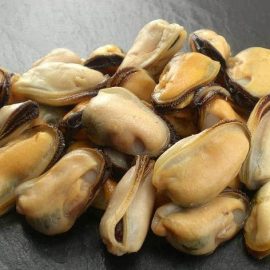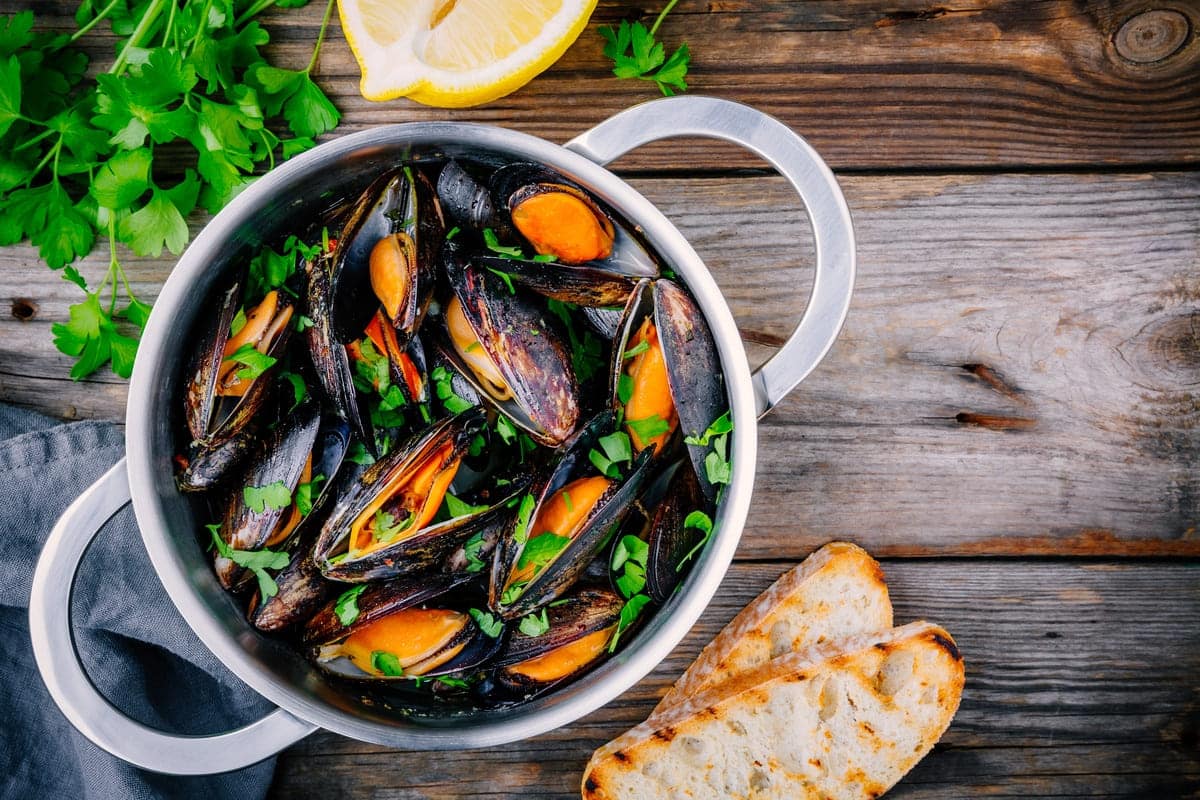
Introduction
Mussels are aquatic bivalve molluscs found in fresh- and saltwater environments worldwide. They are an essential natural resource and play a role in the health of marine ecosystems; they are also a popular and versatile seafood source, often eaten as part of a larger meal.
Mussels are popular for their succulent, sweet taste and fleshy texture. Besides being nutritious, they are also very filling, making them a good choice for those seeking to maintain a healthy lifestyle.
Description
Mussels of the family Mytilidae are a species of bivalve molluscs, including popular members such as clams, oysters and scallops. These aquatic creatures are easily recognisable due to their hinged, two-part shells, the inner surface of which is known as the mantle.
Mussels are filter-feeders, taking water from their environment and straining out food particles to consume. They possess gills which allow them to feed and filter food from the water column. “Mucus flow” and filter feeding are their unique feeding mechanisms, which draw particles from the water and trap them in sticky, mucus webs. Water cleanliness is maintained through this type of feeding.
Mussels are sedentary animals and, for this reason, are often found living in groups or beds of hundreds or thousands of individuals. They are sessile–unable to swim–and depend on byssal threads which connect them to the substrate below the water.
Physical Characteristics
Mussels are bivalves, meaning they have two hinged shells usually joined together by a leathery or rubbery body, a fleshy foot used for locomotion, and a filamentous beard or byssus used to attach to rocks and surfaces. They are common worldwide in temperate and tropical coastal waters and are typically small to medium-sized molluscs ranging from a few centimetres to over 20 centimetres in length.
They have an elongated, slightly curved, and triangular-shaped shell, with the interior typically a white to yellow colour and the exterior typically a blue-black or purplish to brighter hues such as orange, red, or purple. They have thin, concentric rings, allowing for their age to be estimated. The shell’s exterior features ridges and the interior has a soft body protected by a gelatinous layer.
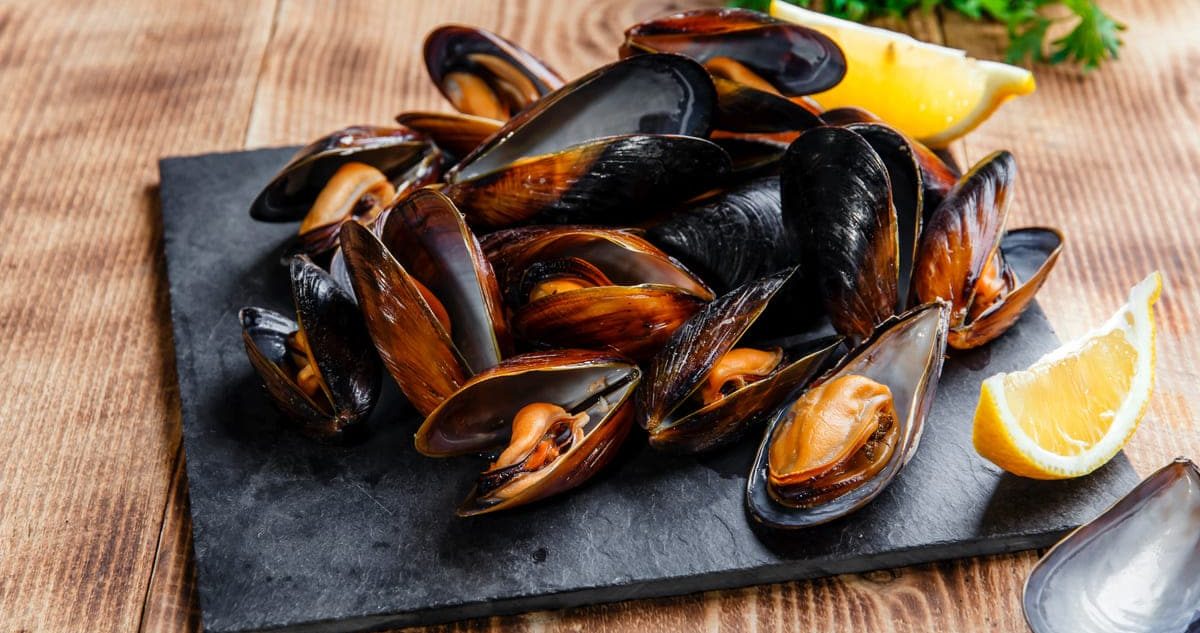
Habitat
Mussels are a type of bivalve mollusc found in both freshwater and saltwater environments worldwide. They are most common in estuaries, deep-water areas, and shorelines and attach themselves to rocks, pebbles and sand. They are found in most coastal locations worldwide and are characterised by their solid and triangular-shaped shells.
For mussels to survive, they need suitable living conditions. They require waters with moderate to low salinity levels, usually 1-2ppt, and an optimal temperature of 18-18.5 degrees Celsius. They thrive in slightly acidic conditions and need a pH balance between 6.5 and 8.5. Mussels also require a good supply of oxygen and nutrients and regular wave action to ensure food particles reach their gills.
Distribution of Stocks
Mytilidae are found throughout the world in a wide range of habitats. This includes but is not limited to the intertidal zone, shallow coastal waters, estuaries and even the deep sea.
Mytilus edulis is the most common mussel species and is native to temperate regions in the Northern Hemisphere. Mytilus galloprovicialis is most commonly found in the Mediterranean and Black Sea coasts, while Mytilus coruscus inhabits the eastern shores of North America. Finally, the Arctic, Pacific, and Atlantic oceans are home to Mytilus trossulus.
Shellfish Aquaculture
Shellfish aquaculture is a sustainable way of farmed seafood production, acting as an environmentally friendly alternative to depleting wild mussel populations. Fisheries are an effective means of managing mussel populations, with tools such as fisheries quotas, multispecies management plans, coastal protection areas and low-impact harvesting practices often employed. This allows the population to remain balanced and healthy while reducing environmental impact.
Mussels are widely consumed in Europe and North America and are among the most widely-fished seafood species in the world. Mussels are usually harvested using dredging or hand-picking and are farmed commercially in many parts of the world.
Conservation and Preservation
Unfortunately, mussel populations can be threatened by pollution and overharvesting. Therefore, maintaining healthy mussel populations is essential to preserve their unique ecosystems and ensure the future of mussel-based industries for generations to come.
By understanding their life cycle and the pressures they face, it is possible to develop sustainable practices that will ensure the continued survival of mussels and the diverse ecosystems they support.
Sustainable Harvesting Practices
Mussels are harvested from either natural beds or aquaculture operations and are usually sold in individual units or quantities of between five and fifty kilograms. Depending on harvesting circumstances, dredges, hand-operated tongs, or baskets may be used, with mussels also proven to be suitable bait for recreational fishing.
Low-impact harvesting techniques reduce disturbances to existing populations, including ropes and hand tumbling. Furthermore, specific practices, such as catch and release, and a reduction of harvest during spawning season, can help to maintain wild populations. These measures, alongside a focus on coastal protection and marine conservation, ensure the delicate mussels remain safe from potential damage from development or coastal disturbances.
The United Nations Food and Agriculture Organization (FAO) urges stakeholders to be mindful of responsible mussel harvesting methods.
Regulation
The exploitation of mussels is heavily regulated, both nationally and internationally. This includes setting minimum catch sizes, allowable catch limits, fishing seasons, and restrictions on fishing gear and monitoring programs. In some jurisdictions, the legality of specific practices, such as bottom trawling, aquaculture, and dredging, significantly affects the sustainability of mussel populations.
Reproductive Cycle and Lifespan of Mussels
Mussels possess a complex reproductive cycle that begins with the mating process and culminates in the release of sperm and eggs, known as broadcast spawning, into the water. The free-floating larvae, known as glochidia, attach to an obligate host for 6-9 weeks before dropping off and settling onto a substrate and becoming juvenile mussels.
Adult mussels usually live for 3-4 years but can live up to 5 years, depending on the species. Mussels have an average lifespan of up to 20 years, with some species living for as long as 40 years.
During this time, mussels will continue to reproduce, releasing gametes (sex cells) into the water each spawning season and producing up to 400,000 eggs. This long lifespan makes mussels a vital part of the aquatic ecosystem, providing essential habitat and food for various fish, birds, and other marine species.
Species and Taxonomy
Over two thousand mussel species are found worldwide, including the blue mussel (Mytilus edulis), the most widely-used species commercially. Mussels belong to the phylum Mollusca and class Bivalvia and are closely related to clams and oysters.
Etymology
The etymology of the word ‘mussel’ is believed to have originated from the Latin word mytilus, which refers to a species of mussel called Mytilus edulis. This species can be found in the rivers of Thame and is also known as the zebra mussel. They are bivalves characterised by their two shells and byssus threads, which allow them to attach themselves to rocks or other hard surfaces. The term ‘mussel’ also refers to a range of species, including pearl mussels, highly prized for their pearls and other precious materials.
The word ‘mussel’ has been used since ancient times, with references appearing in texts from as early as the 4th century BC. It described various aquatic molluscs harvested for food, such as oysters and clams. These days, it is most commonly referred to marine or freshwater bivalves belonging to the family Mytilidae or Unionidae. Regardless of its origin, the term ‘mussel’ has evolved into what we know today; an edible mollusc living in both marine and freshwater habitats worldwide.
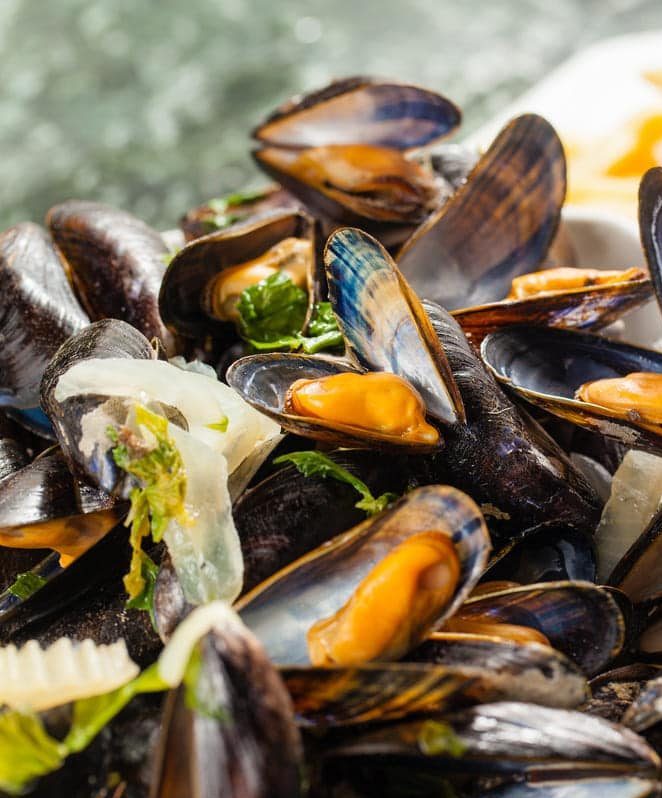
Mussels Feeding Strategy
Mussels have a filter-feeding system that filters water through their gills to obtain food particles. They get much of their nutrients from ingesting organic particles such as phytoplankton, zooplankton, and small bits of organic debris.
Mussels will actively hunt larger prey such as small crustaceans and aquatic worms, extending their foot out of the shell, which can reach up to 10 times the length of the mussel itself, to grasp the food with its byssus threads before pulling the food into the shell.
In addition to hunting for food, mussels get nourishment from plankton, suspended organic matter in the water columns near the surface and deeper waters, and detritus as a source of additional items. This process is aided by two kinds of cilia that act together on the mussels’ gills to capture and move food to their mouths.
Economic and Ecological Importance of Mussels
Mussels serve an essential ecological function in many aquatic ecosystems. As they are filter-feeders, they consume phytoplankton and other planktonic particles, becoming prey for various other animals.
Also, mussel beds create a vital refuge for other species, providing additional habitat complexity and controlling benthic oxygen levels.
They filter water and remove pollutants, preventing the spread of disease and sedimentation. They also protect the shore from erosion by creating a natural barrier against waves. By providing habitat, food, and a buffer against the elements, mussels are an integral part of the ecosystem.
Mussels are also very important to the economy, as they are harvested for their meat and shells. Due to their high value, many fishermen rely on mussels as a source of income, either by direct harvesting or by maintaining farms of mussels for commercial purposes.
Health Benefits of Mussels
Due to their nutritional profile, mussels offer numerous health benefits. They are low in calories and cholesterol, making them an ideal choice for people trying to manage their weight. In addition, the protein, minerals, vitamins and omega-3 fatty acids found in mussels play a part in maintaining overall health. The omega-3 fatty acids in mussels have been linked to many positive health results, such as improved heart health and cognitive function.
Eating mussels regularly has been shown to reduce blood cholesterol levels and improve cardiovascular health. Additionally, mussels have high levels of antioxidants and are low in calories and fat, making them a nutritional powerhouse.
Environmental Benefits
Mussels are revered for their sustainability, nutrient-rich properties, and ecological benefits. They are filter feeders and help clean the water of toxins as they feed, and their farming does not require pesticides, antibiotics or other chemicals. The analysis also suggests that mussels positively impact water quality, water depths and coastal habitats.
Flavor and Texture
The flavour of mussels depends on where they live and what they eat. Saltwater mussels are saltier than freshwater ones, whereas mussels from colder climates tend to have a more delicate flavour.
In addition, mussels can take on flavours of the cooking liquid when steamed, boiled or fried. Mussels are often described as having an “umami” flavour profile, similar to a seafood flavour.
Selecting and Storing Mussels
When selecting mussels, always choose those that are fresh, have a pleasing aroma, and have closed shells.
Avoid mussels that have a foul odour, show signs of decay, or have shells that do not close when tapped.
When storing live mussels before cooking, they should be kept on ice, not submerged in water, and kept in the refrigerator until ready to cook.
As mussels will start to lose their freshness after a day or two, it is best to use them on the day they are purchased.
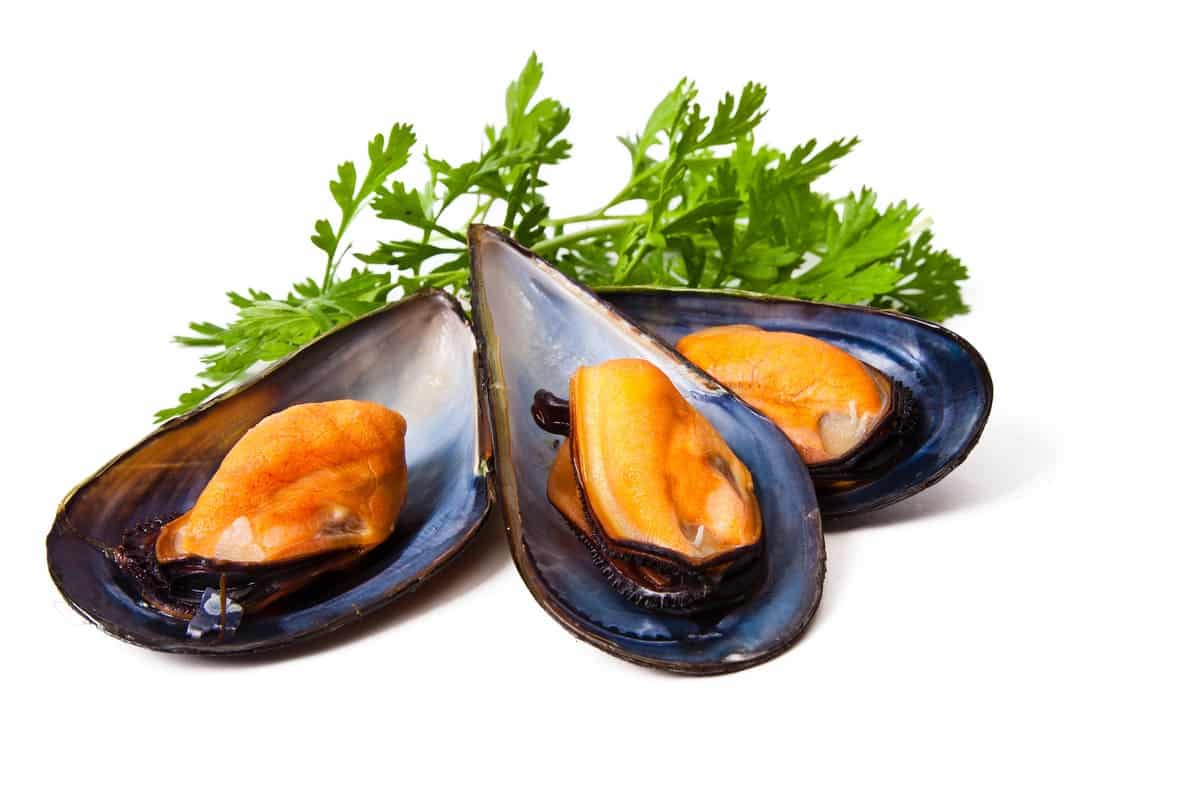
Cooking Mussels
Mussel meat can be enjoyed cooked or raw, typically added to dishes such as salads, soups, pasta and more. Different mussels have unique flavour profiles, so it is crucial to consider the variety when deciding what flavours and spices to use in recipes.
Mussels are often served with a garlic and white wine sauce, tomato and herb sauce, or a broth and taste great when paired with crusty bread.
Though mussels may be an acquired taste to some, they are an increasingly popular food choice due to their excellent sustainable protein source. When prepared and cooked correctly, mussels can provide an enjoyable and nutritious meal for the whole family.
Preparing Mussels for Cooking
Before cooking, the mussels should be scrubbed with a brush to remove debris. Discard any open mussels after being tapped lightly, as this can indicate an old or unfresh mussel.
Cooking Techniques
Mussels can be cooked by steaming, boiling, frying, or baking. When steaming, fill the bottom of a large pot with one to two inches of liquid, such as cold water, white wine, broth, fresh herbs, garlic, kosher salt, and pepper. Bring the liquid to a boil and add the mussels, then cover the pot and mussels steam for five to eight minutes until the shells open.
To cook mussels, fill the bottom of a large pot with a liquid such as water, broth, or wine and bring it to a boil. Add all the mussels and cover the pot, then reduce the heat to a simmer and cook for five minutes or until the mussel shells open.
When frying, cook the mussels in a pan over medium heat with butter, extra virgin olive oil, or margarine. After two minutes, add a liquid such as broth, wine, or water and let simmer uncovered for five to seven minutes.
To bake, combine a liquid such as white wine, beer, or broth with butter or olive oil and bake on an oven-safe pan in a preheated oven at 350 degrees for eight to ten minutes.
Serving Mussels
After the mussels have been cooked, transfer them to a bowl and serve immediately. When appropriately cooked, mussels can be incredibly savoury and decadent. No matter how you decide to cook them, they are sure to be a crowd-pleasing culinary favourite.
Side Dishes
Mussels can be accompanied by various side dishes, from classic staples to more innovative and fresh recipes. Popular side dishes to pair with mussels include pasta, sourdough bread, garlic fries, roasted or grilled vegetables, mashed potatoes, fried rice, and chowder. Dishes such as risotto, polenta, and mashed cauliflower are considered innovative side dishes for mussels.
For a traditional option, french fries, roasted root vegetables and mashed potatoes are particularly delicious with mussels.
Lighter side dishes can include salads with lemon juice dressing, steamed vegetables, and garlic bread dishes. For something a little more unique, mussels can also be paired with risotto, a slaw-style side dish, orzo pasta salad, noodle stir-fry, and roasted potatoes with crispy skin.
Variety of Mussel Dishes
Mussels can be used in various dishes, from French to Asian to Mediterranean.
Popular recipes that feature mussels as the main ingredient include Moules Marineres (steamed mussels in white wine and garlic), Mussels in Creamy Butter and Parsley Sauce, Mussel Stew, Mussels with Tomatoes and White Wine, Mussels with Shallots and Parsley, Mussels in Curry Sauce, Mussel Linguine, Mussel Risotto, Spaghetti with Mussels, Mussels Provencal, Steam-Fried Mussels, Mussels in Tomato Sauce, and Mussels with Shallots and Garlic.
Mussels can also be used in salads and soups, such as French Onion Soup and Chowder, as well as in pasta, tacos, and sandwiches. Examples of dishes include Thai-style mussels in coconut milk sauce, Italian-style mussels with tomatoes and onions, and Spanish-style mussels with chorizo.
Classic Recipes
The use of mussels in cooking dates back centuries, and there is a wide range of classic recipes from around the world. For example, Spanish dishes often include Paella and Almejas a la Marinera (Mussels with Garlic and Parsley).
Italians often rely on classic recipes such as Mussel Linguine and Mussel Risotto.
Asian cuisine features recipes such as Thai mussels in coconut milk and Vietnamese mussels in a herbed fish sauce.
Conclusion
Mussels are an iconic and integral part of the food chain worldwide. They offer insight into the health of our oceans and coastal ecosystems while being a reliable source of nutrients and tasty addition to various dishes.
They are a versatile and popular ingredient used in a variety of recipes around the world; their unique flavour and texture make them a great addition to many dishes. Mussels can make a delicious and nutritious meal if cooked and prepared correctly.
